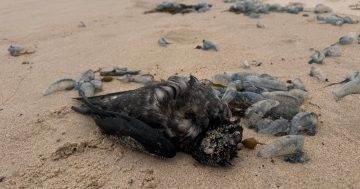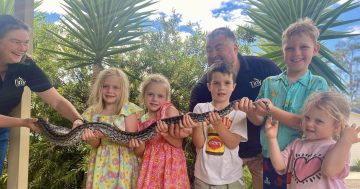
Dead Mutton Birds are a common sight on Eurobodalla’s beaches, seen here at Congo. Photo: Supplied.
Those who grew up lucky enough to have the beach at their back door will be familiar with the annual migration of Mutton Birds.
As a kid, I remember my local beach being blanketed in their grey feathered bodies; washed ashore dead with the tide.
Fears of pollution in the water were soon put to one side once people realised the epic tale behind these birds.
These common, plain looking birds more properly called Short-Tailed Shearwaters are amazing. Each year they travel halfway around the world on a two-month journey from their Alaskan wintering grounds to raise a single chick here in Australia.
Eurobodalla Shire Council’s Sustainability Officer Emma Patyus agrees and says it is an enormous undertaking for a bird that weighs just half a kilo.
“The migration requires huge amounts of energy reserves, and many die along the way due to exhaustion, illness or bad weather,” she says.
“That’s how most Aussies notice the arrival of these birds – when carcasses of the unsuccessful birds wash up on the beach. It’s one of the signals that tells avian researchers the Mutton Birds got enough feed in Alaska to even try to make it to Australia.”
Emma says Spring was the time to be seeing Mutton Birds along Eurobodalla’s coast, but experts from Birdlife Australia had reported a significant decline in bird numbers reaching Australia this year.
“The ornithologists reported warming ocean temperatures had resulted in a dire shortage of marine prey for the birds while in Alaska,” she says.
“According to the U.S Fish and Wildlife Service, many thousands of the birds died of starvation before they even got underway.
“Put simply – many thousands of the birds did not have the food or energy to fly south this year.”
Emma says locals will still notice Mutton Birds – alive and dead – just not in the usual numbers.
“Dead birds are present on beaches and should be left in situ, letting nature take its course,” she says, emphasising that live birds were best helped by keeping disturbance to a minimum.
“Stay a good distance away from recovering birds, keep pets restrained, and keep beaches, foreshores and waterways litter free. Let’s give the chicks that hatch this year the very best start before they head to Alaska at summer’s end.”










